In November 2023, a powerful seismic swarm tore open deep cracks through the fishing town of Grindavík on Iceland’s Reykjanes peninsula, forcing the evacuation of all 3,800 residents.
Barely a month later, on December 18, after 783 years of dormancy, the Svartsengi volcanic system reawakened with a sudden effusive eruption. This was the beginning of a new volcanic cycle in southwestern Iceland, one that would dramatically reshape both the landscape and the lives of those living nearby.
From December 2023 through August 2025, nine separate fissure eruptions burst from the Sundhnúkagígar crater row.
Each event began with a several-kilometer-long fissure violently tearing open the earth, unleashing lava at rates as high as 1,500–2,500 cubic meters per second.
These early hours of furious activity gradually gave way to weeks of lower-intensity effusion, building new lava fields and altering the terrain.
The eruptions posed a direct threat to critical infrastructure: the Svartsengi geothermal power plant, which provides heating and electricity to roughly 30,000 people on the whole peninsula, the world-famous Blue Lagoon spa and resort and Grindavík itself.
In response, authorities undertook one of the most ambitious civil defense efforts in Iceland’s modern history, constructing massive earth barriers to redirect lava.
These interventions proved largely effective, sparing the power plant and parts of Grindavík, though not without loss: three homes and key roads were engulfed, only to be rebuilt within days, a testament to Icelanders’ resilience.
Scientifically, Svartsengi has become a natural laboratory. Magma continues to accumulate in a chamber around 5 km beneath the peninsula, strongly suggesting further eruptions in 2025 and beyond.
For volcanologists, this sequence provides rare data on how rift-zone volcanoes behave, how magma propagates through crustal fractures, and how communities can coexist with such dynamic landscapes.
This photographic project documents the evolution of Svartsengi’s awakening: the raw violence of fissure openings, the surreal beauty of lava rivers under Arctic skies, the human struggle to defend homes and infrastructure, and the profound intersection between geological forces and everyday life.
Through imagery, it seeks to record not just an eruption, but a historic turning point, when a long-silent volcano reclaimed its presence on the surface of Iceland.
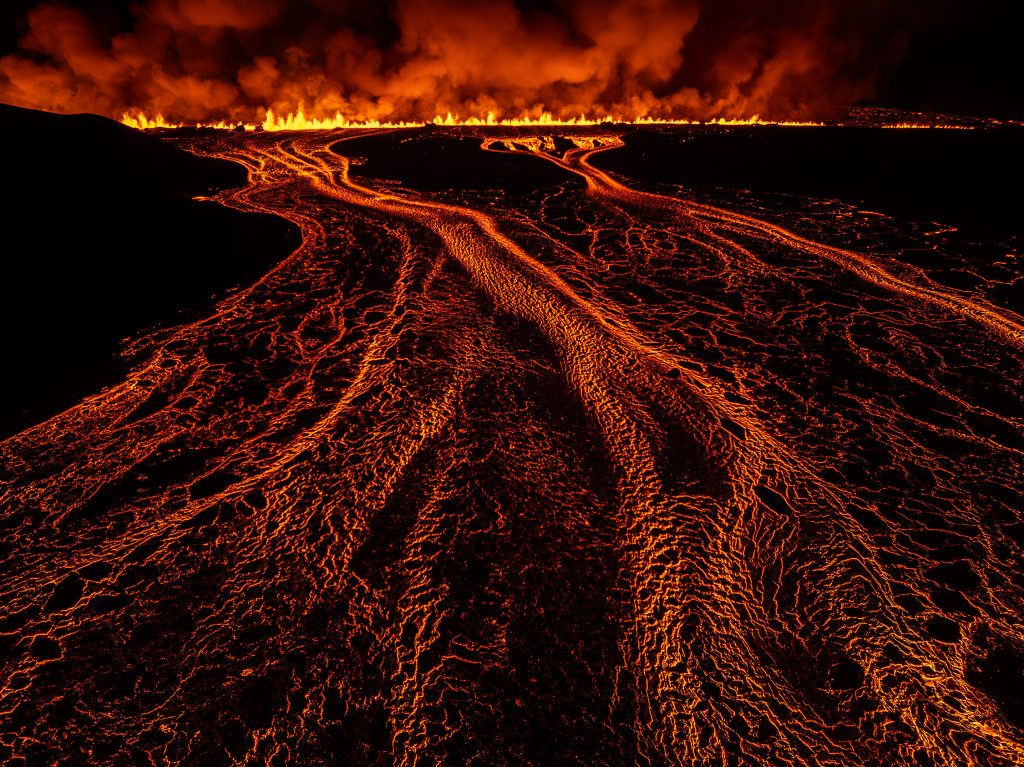
A Powerful Beginning
Reykjanes November 21 2024 - Along the Sundhn kag gar crater row the seventh episode of the Svartsengi cycle begins with a 4-km fissure tearing open the surface driving a fast-moving lava river roughly 2 5 km from the source br In its first hours discharge was estimated near 1 500 m s repeating the sequence seen throughout this eruption a sudden high-effusion burst that settles into weeks of steadier output br The flow front advances across fresh still-cooling fields laid down earlier in the year while the fissure glows in the background br This frame documents the characteristic powerful beginning of these eruptive episodes that has defined the series since December 2023 and continues to reshape the Reykjanes peninsula
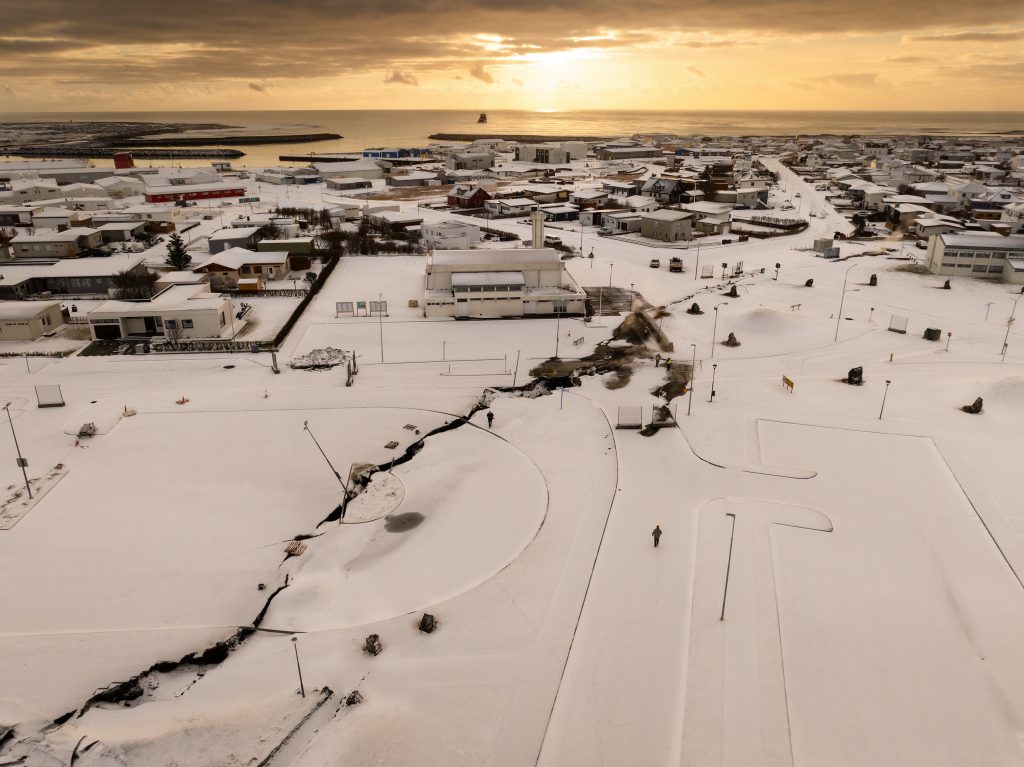
Grindavík
Grindav k November 2023 - A few days after the seismic swarm Grindav k s center reveals the scar that forced 3 800 residents to evacuate br The swarm was driven by a fast-moving magma intrusion described by the Icelandic Met Office as the fastest ever observed with an estimated inflow near 7 400 m of magma per second br In less than 12 hours the intrusion raced roughly 15 km reaching town on the evening of November 10 In the foreground a major surface crack traces the intrusion s path splitting streets and foundations br The town s western side right subsided by as much as 130 cm in places compounding damage to utilities and roads br Offshore an Icelandic Coast Guard vessel surveys the area the ICG coordinated safety search and rescue and security as authorities assessed hazards and stabilized critical infrastructure
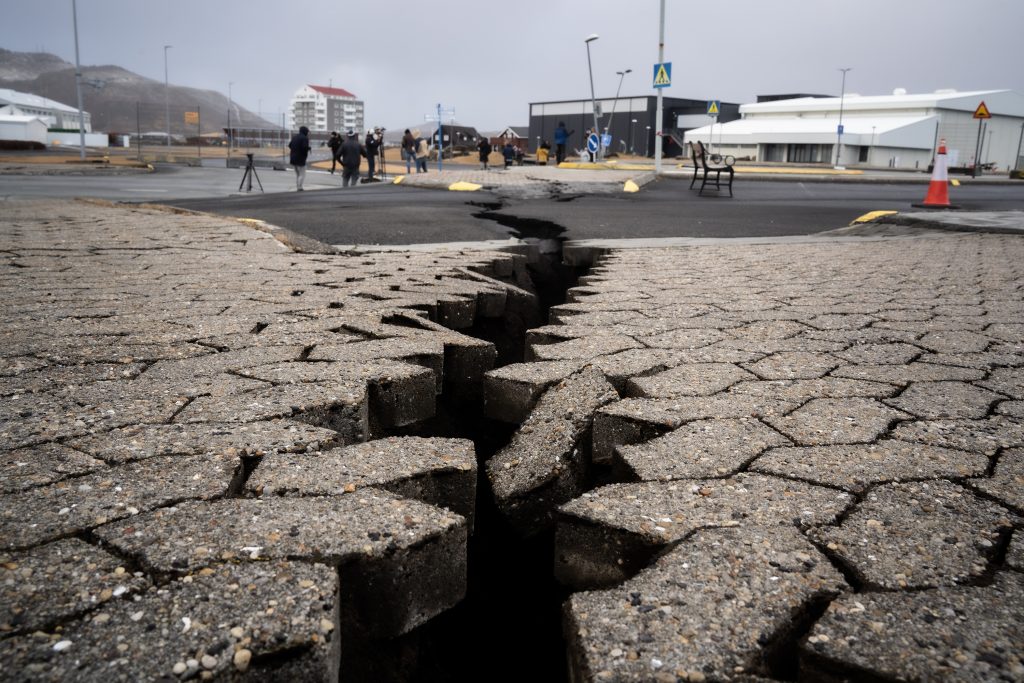
Where the Ground Split
Grindav k November 2023 - A detail of the surface rupture that opened inside Grindav k during the November 10 2023 br At curb level the town s rupture reads like a cross-section interlocking pavers lifted and torn into teeth a dark void running toward the intersection where officials and reporters gather Benches cones and fresh asphalt mark a place paused mid-repair as crews map offsets and protect buried lines br This view focuses on the everyday scale of the crisis on how a moving fracture threads between shops and sidewalks turning a familiar crossing into an unplanned work zone
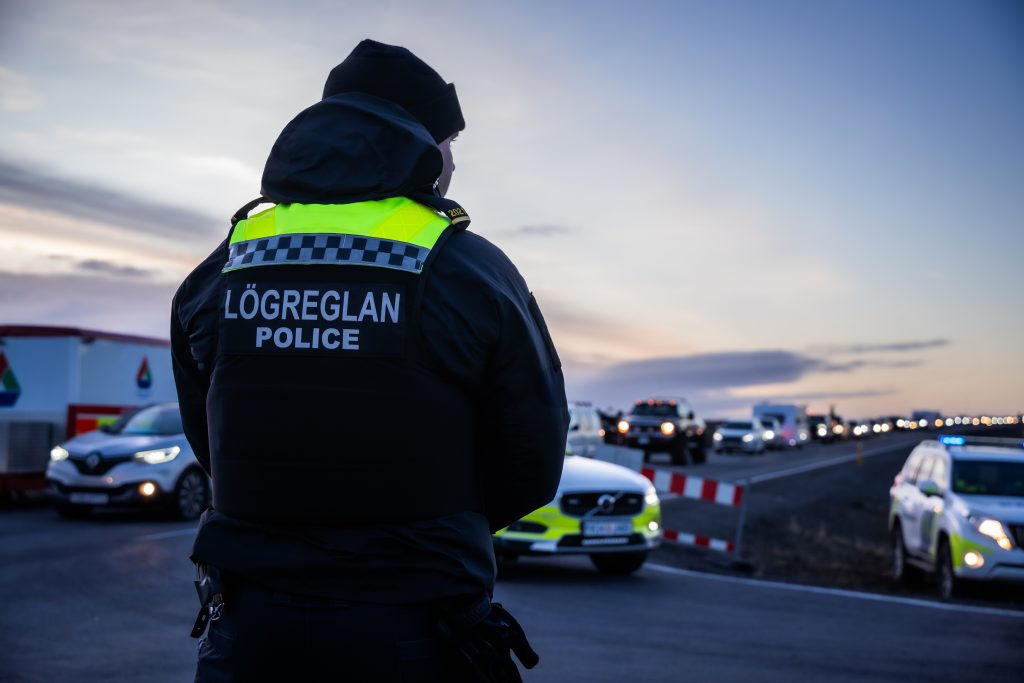
The Evacuation Convoy
Su urstrandarvegur November 13 2023 - A police officer watches as a line of cars leaves Grindav k toward the checkpoint 12 km east br After the initial evacuation on November 10 residents were allowed brief controlled returns to collect essentials br The operations were conducted dividing the areas based on the damages observed in order to scatter the population and not to engulf the town unnecessarily Nightly curfews cleared the town again until morning br On higher-risk days access was cancelled altogether The rolling operation stretched on for weeks balancing urgency safety and the need to let people retrieve pieces of their lives
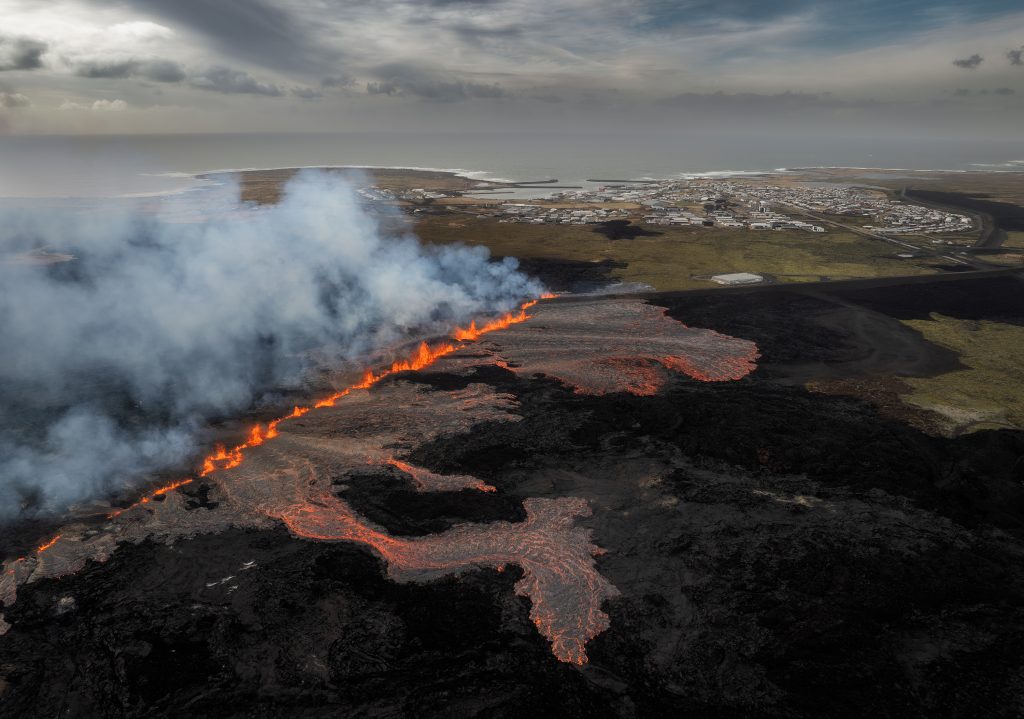
Fissure at the Edge of Grindavík
April 1 2025 - A new fissure opens along Sundhn kag gar its line of fire advancing toward Grindav k while fresh lava sheets spread across older fields br Since November 2023 earthen barriers have been built to ring the town and key infrastructure Here they steer the flow away forcing it to stall and pool on the lava plain br The scene closely echoes the January 2024 episode a violent first surge then broad channelized tongues of lava redirected by engineered ramparts with the town and coast lying just beyond the gas plume br From this vantage the lava is at the town s doorstep Those barriers raised and rebuilt across the sequence have already turned back multiple advances without them repeated episodes like this would likely have overrun Grindav k entirely severing roads and utilities and pushing large areas toward permanent abandonment
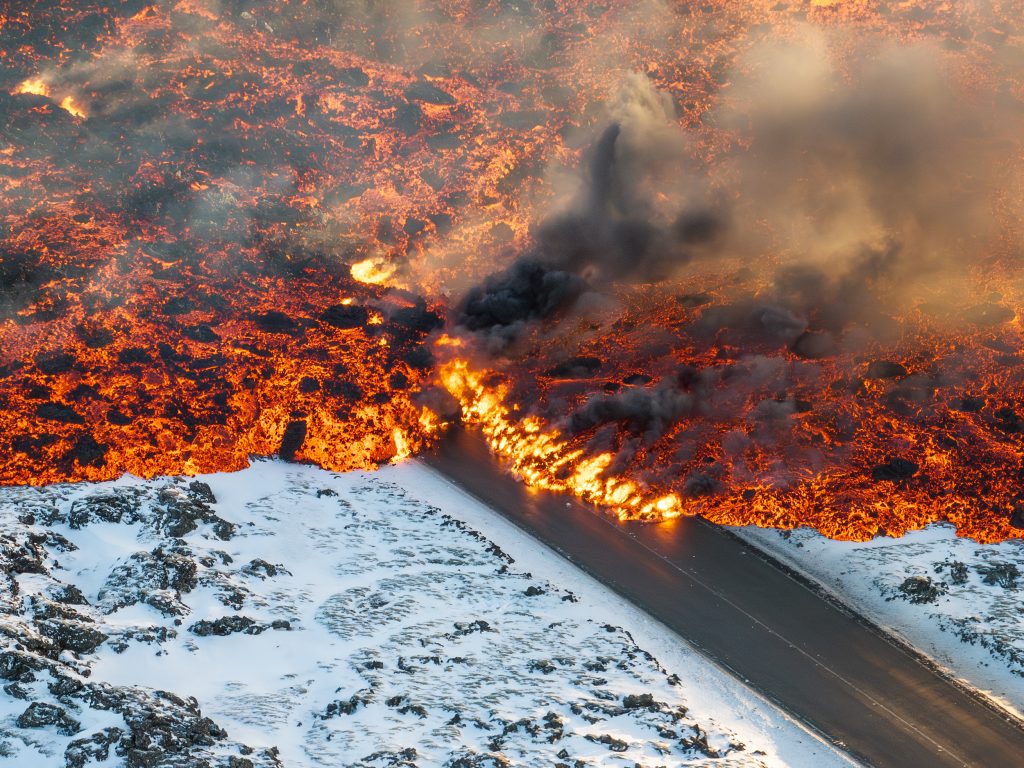
Front of Fire, Front of Winter
Svartsengi February 8 2024 - An incandescent front pours across the access road to the Blue Lagoon during the third episode of the Svartsengi sequence br Asphalt ignites along the verge sending dark smoke over a landscape of steaming snow and glowing crust The flow shears through the only direct route to the spa and nearby facilities burying tarmac and roadside services under fresh rock br Here both lava and snow frame the road the only witness of human presence between these two powerful forces of nature
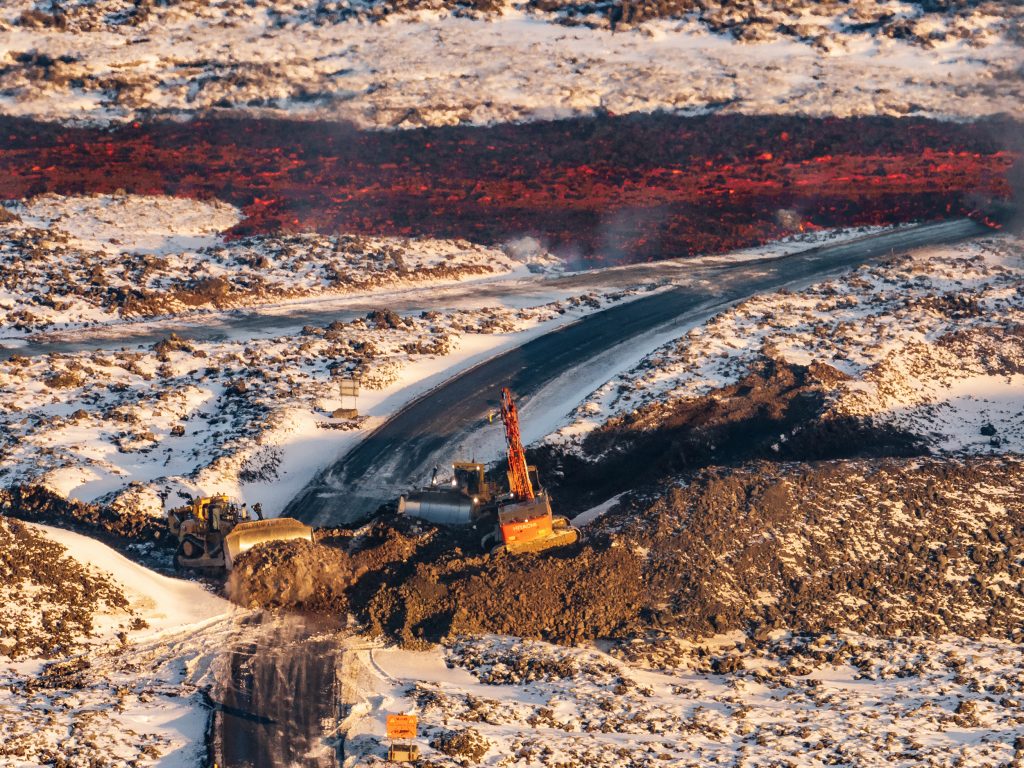
Finishing the Line
February 8 2024 - With lava advancing only tens of meters away excavators and bulldozers complete the earthen barrier around the Blue Lagoon br Built from rock and fill these ramparts form a continuous rim that forces fast fluid basalt to stall pool and turn away from key facilities The work is precise and quick raise compact and seal before the next surge arrives br Across the Svartsengi sequence lines like this have repeatedly limited damage An improvised civil-engineering shield set against a moving river of fire
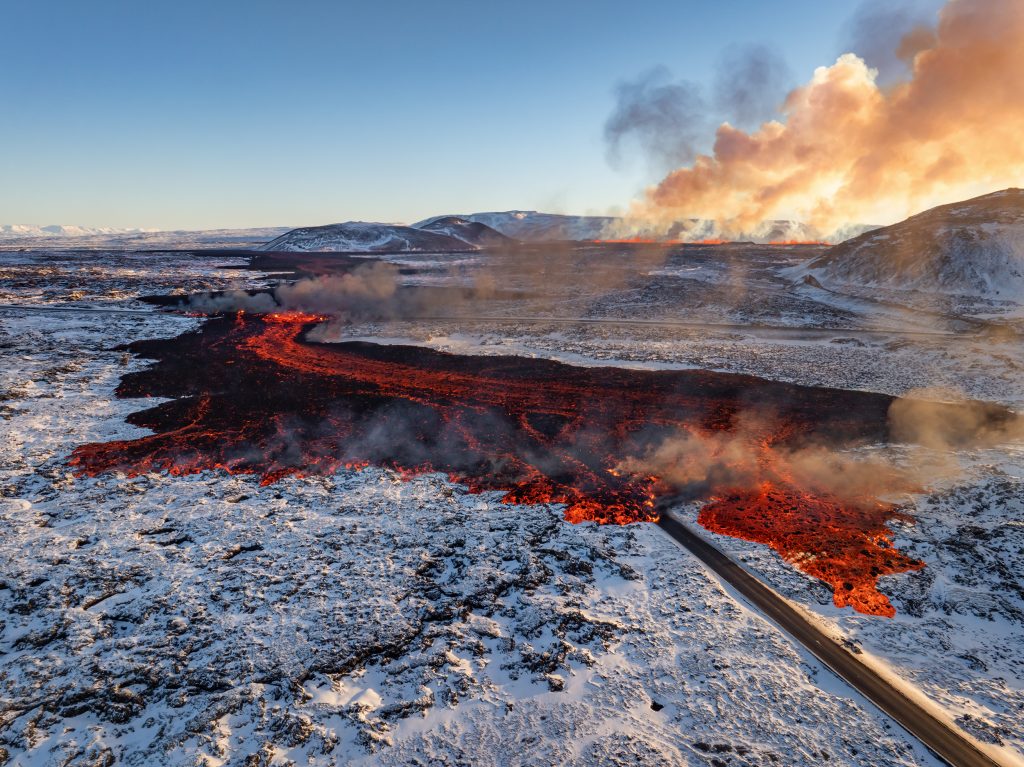
Contrasts
February 8 2024 - From altitude the third episode of the Svartsengi sequence resolves into stark opposites br In the foreground the access road to the Blue Lagoon cuts a neat line across white ground beyond it a roughly 3 km-long fissure throws fountains and a dense gas plume into the wind Sheets of fresh basalt have already run more than 3 km from the vents overtopping older fields and steaming the snow to vapor br The wide view shows scale a thin human corridor set against a fast-growing lava plain
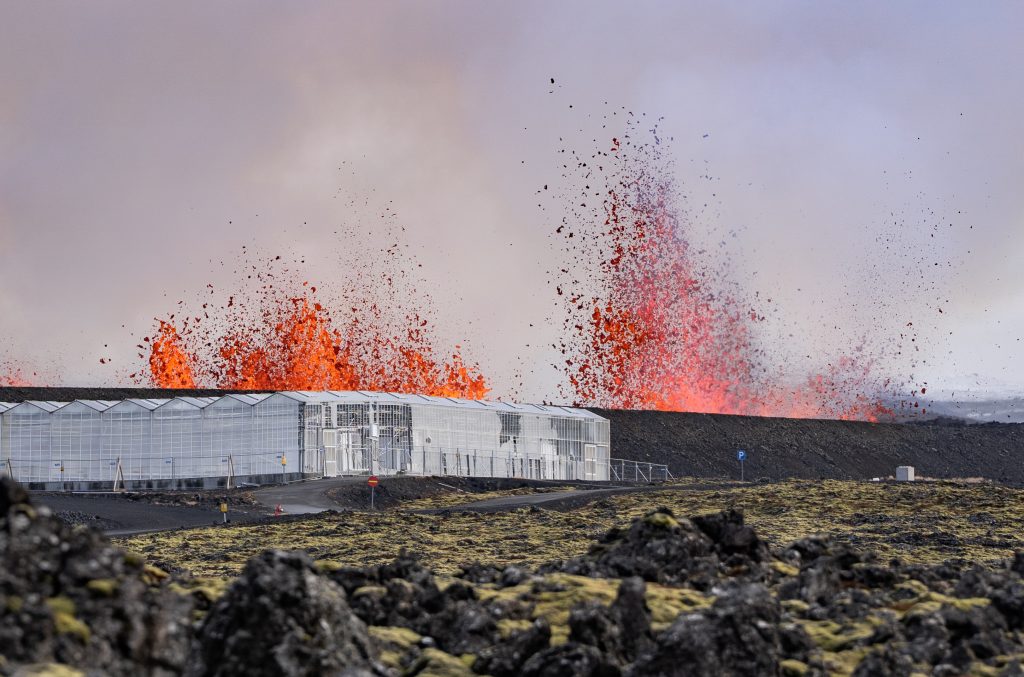
Between Glass and Fire
April 1 2025 - Just outside of Grindav k an already damaged greenhouse in the Svartsengi field sits just in front of a new line of lava fountains br The structure was first shattered during the November 2023 seismic swarm months later it sits close to the eruption itself Behind it the earthen ramparts raised around key infrastructure hold their ground catching fresh flows and forcing them to stall or turn br The frame compresses the whole response into one view a fragile building a man-made rim of rock and soil and a fissure throwing fire just beyond br A proof that civil engineering not distance is what keeps this edge habitable
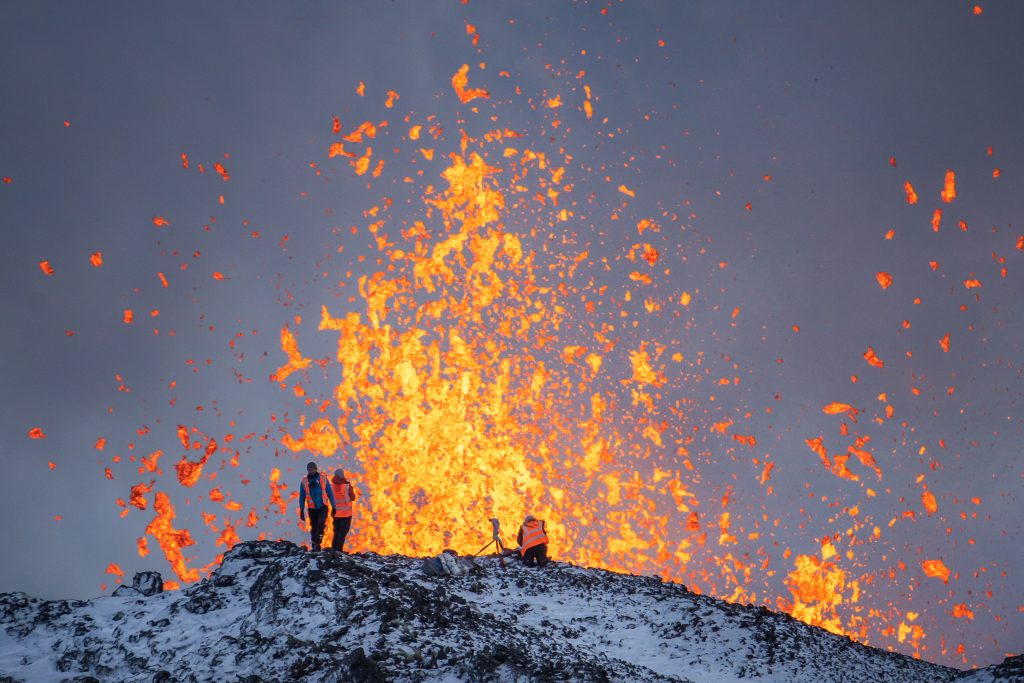
Field Work at the Vent
December 19 2023 - On the second day of the first Svartsengi eruption University of Iceland scientists set up on a ridge a few hundred meters from an active vent br From this vantage they measure fountain heights and flow fronts sample gas and time pulses to estimate effusion rates A work that feeds real-time hazard assessments for civil defense br Helmets masks and wind checks are as essential as notebooks approach when the plume drifts away retreat when it swings back In a landscape remade by hours data is the constant that guides decisions
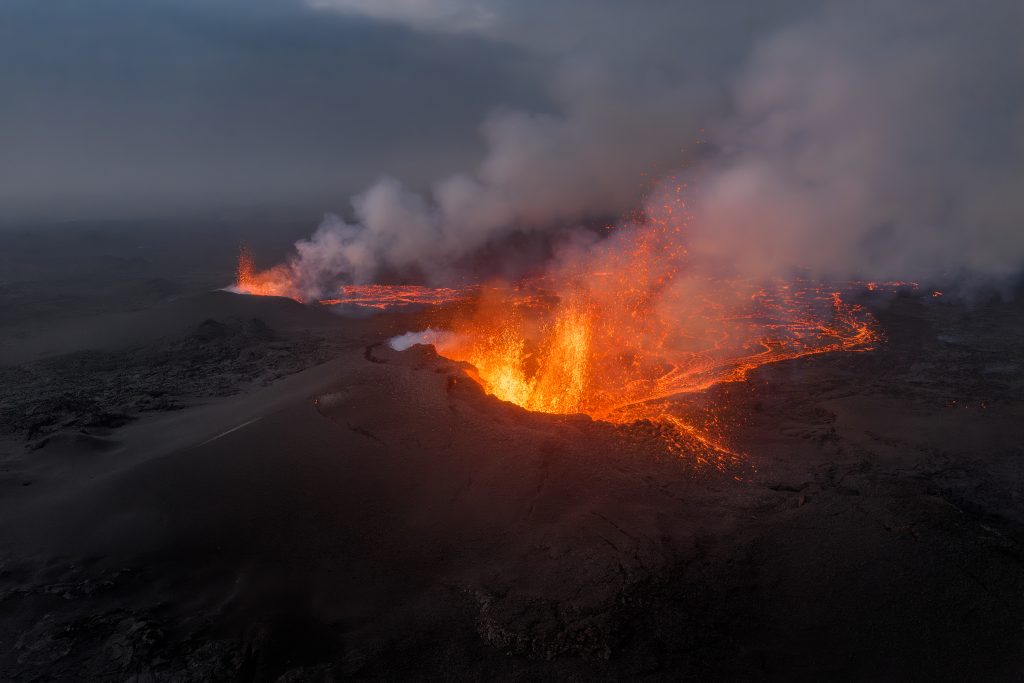
Cones
July 18 2025 - On the Sundhn kag gar crater row two spatter cones remain active throwing steady fountains that feed narrow channels across earlier lava br This is the second phase typical of Svartsengi episodes after an intense opening surge the effusion drops to a lower more stable rate Channels crust over build levees and advance in short pulses rather than broad sheets br Cone rims grow by welded spatter vents migrate a few meters and occasional bursts refresh the flow fronts The scene shows the system s long tail with slower output that persists for days to weeks that quietly expands the lava field
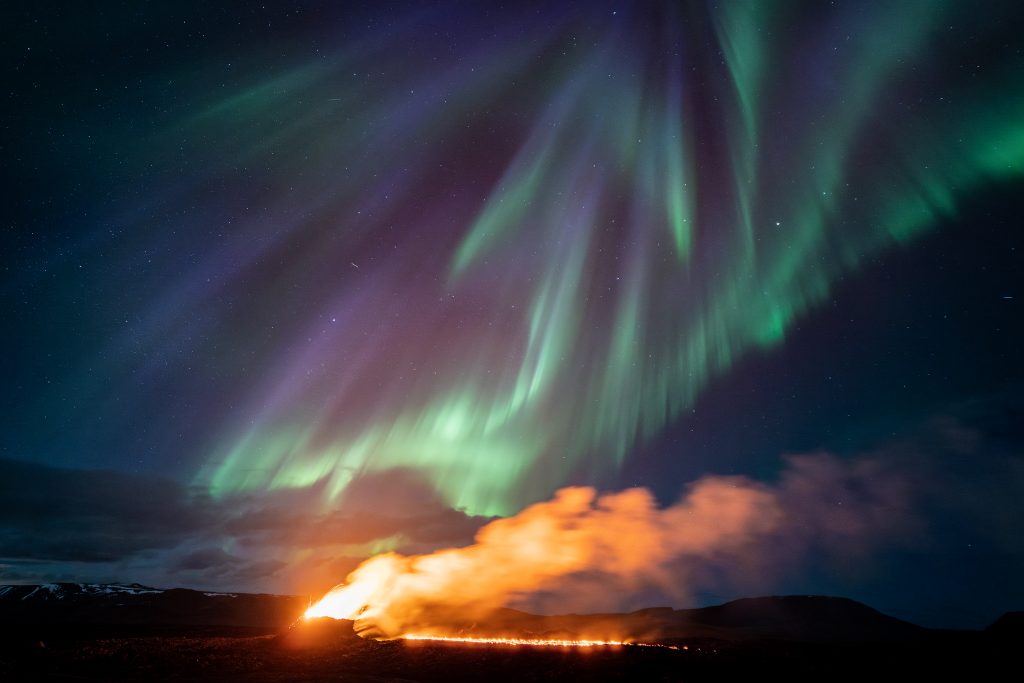
Icelandic Elements
April 16 2024 - Northern lights dance above the active Sundhn kag gar crater row during the fourth episode of the Svartsengi eruption br Fountains and glowing channels light the lava field while aurora curtains fade in and out during one of the last clear nights before Arctic summer ends the season br The scene brings two untamed forces together geomagnetic light from the sky and volcanic light from the ground Even as these eruptions disrupt roads and daily life moments like this reveal a stark unmatched beauty that is uniquely Iceland